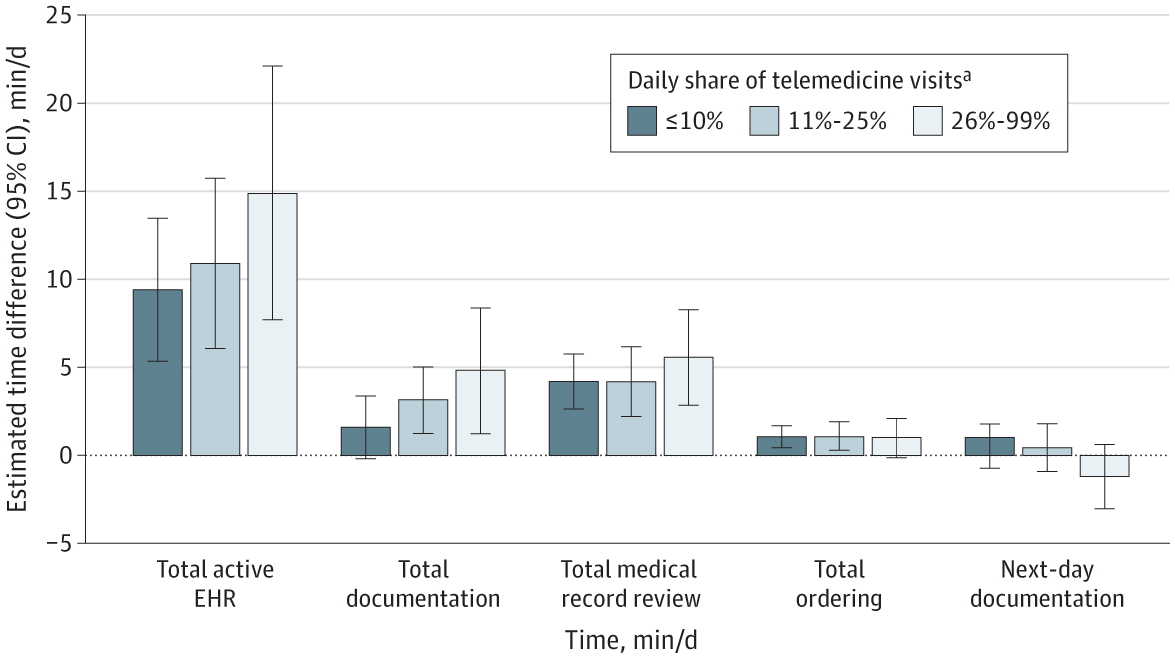Telemedicine and In-Person Visit Modality Mix and Electronic Health Record Use in Primary Care

Telemedicine use increased substantially during and after the COVID-19 pandemic and has the potential to provide low-acuity medical services at lower costs. However, telemedicine also levies new costs on clinicians. Telemedicine requires shifting care delivery workflows, as it rarely includes clinical support staff but can involve levels of patient complexity similar to in-person visits. This may increase administrative and electronic health record (EHR) burden for clinicians and increase cognitive costs as clinicians switch modalities.his cross-sectional study combined visit modality data with EHR active use data capturing time spent by primary care physicians (PCPs) in the Cerner EHR system from December 2021 through June 2023 at MedStar Health, a large multispecialty health system in the mid-Atlantic region.The study included 316 PCPs observed across 67 894 PCP-day observations distributed across 5 daily telemedicine share categories (zero daily telemedicine share, 44.7% of all PCP-days; ≤10% share, 17.2%; 11%-25% share, 24.8%; 26%-99% share, 11.1%; and 100% share, 2.2%); mean (SD) overall visit volume, 13.9 (7.2).
Make faster decisions with community advice
- AI Gets Better At Writing Patient Histories When Physicians Engineer The Prompts
- New Study Evaluates Virtual Reality to Reduce Scanxiety in Brain Tumor Patients
- Revolutionizing Healthcare: Harnessing the Power of IoT Solutions for Improved Patient Outcomes
- Carrum Health Raises $45 Million Series B to Expand Cancer Care Offerings and Launch New Service Lines
- Ethical Guardrails Are Essential To Making Generative AI Work For Healthcare
Deploy this technology today
-
nQ Cortex
Matched with Medical Subject Headings (MeSH): Biomedical Technology, Healthcare IT News: Artificial Intelligence
- NLabviva Platform
- Labviva Platform
- AI Dermatologist Platform
- Armis Platform for Healthcare

